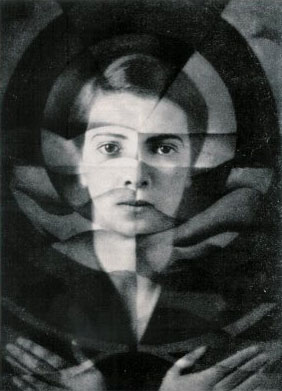Hello all, I just felt like sharing some photography with you tonight.
I wrote an essay in my final year of university for my German art class on the New Woman trope in Weimar Germany and the role female photographers held in regards to it. Like usual, the essay was left to last minute (the night before the deadline) and I didn't exactly know that I was writing about female photographers until I was about half way through the essay...
Nevertheless, I discovered some great photographers who took some beautiful pictures. Some of them have this haunting quality to them and they embody the ideals of the modern woman of the early 20th century. What I love about them is that most of the photographers I looked at took a large number of self-portraits, turning the New Woman trope upside-down. The photographers deny the man to construct a fetishized image of women living in Weimar Germany and instead, they present themselves however they want to be seen.
GERTRUDE ARNDT (1903-2000)
Gertrude is one of my favourite photographers, being a part of the Bauhaus movement (I have a soft spot for Bauhaus). She is mostly known for her series of 43 self-portraits she took in the 1930s.
Read more about her here, here and here.
| Masked Portrait No. 34, 1930 Gertrude Arndt |
 |
| Masked Portrait No. 28, 1930 Gertrude Arndt |
 |
| Masked Portrait, 1930 Gertrude Arndt |
| Masked Portrait, 1930 Gertrude Arndt |
MARTA ASTFALCK-VIETZ (1901-1994)
By far probably my most favourite photographer/artist ever, Marta's work is dark, ethereal, erotic and mesmerizing. She isn't very well known, and material on her is scarce (as I found out, sitting in the university library at 6am...), but you can still find some of her works floating around on the internet if you do a quick search of her name on Google.
Dr Katherine Tubb recently curated a show of her works in Glasgow, which was Marta's first ever solo show outside of Germany. Tubb writes that the works show a range of personal responses to the social, political and sexual transformations of Germany after World War I. They also provide to be a good example of construction of identity.
| Self Portrait No. 20, Date Unknown Marta Astfalck-Vietz |
| Selbstmord in Spiritus (Suicide dans l'alcool), 1927 Marta Astfalck-Vietz |
YVA (1900-1942?)
Yva was born as Else Ernestine Neuländer-Simon, and opened her own photographic studio in 1925. She established herself as one of the leading photographers in Berlin until her forced removal from public life in the late 1930s due to the ultimate intentions of Nazi racial policy.
At her most popular, she produced photos for the growing number of illustrated magazines and periodicals in circulation, like Gebrauchsgraphik and UHU.
In 1930, she began contributing photo-stories to the magazine UHU, which were directed at the young female reader, covering many popular themes such as young women arriving in metropolitan Berlin from the countryside and their many trials and tribulations they faced on their road to stardom. These photo-stories allowed Yva to move beyond the limitations of the static photo image and produce highly competent work in an intermediary genre between photography and film.
 |
| Self Portrait, 1926 Yva |
| Published by UHU, 1932 Yva |
| Published by UHU, 1932/3 Yva |
 |
| Ca. 1930 Yva |
EXTRA READING ON WOMEN ARTISTS IN THE WEIMAR REPUBLIC
- Practicing Modernity: Female Creativity in the Weimar Republic by Christiane Schönfeld, Carmel Finnan (partly available on Google Books)
- Visions of the "Neue Frau": Women and the Visual Arts in Weimar Germany by Marsha Meskimmon, Shearer West
- We Weren't Modern Enough: Women Artists and the Limits of German Modernism by Marsha Meskimmon (partly available on Google Books)
- Women in the Metropolis: Gender and Modernity in Weimar Culture by Katharina von Ankum (partly available on Google Books)

No comments:
Post a Comment